How to See the Liberty Bell...in Queens
A copy of the famous American bell can be found inside a bank, which itself is modeled after Independence Hall!


With 5 separate lines and 124 stations throughout New York City, the Hudson Valley, and Connecticut, the Metro-North Commuter Railroad is responsible for bringing tens of thousands of commuters to and from the Big Apple everyday. Under the operation of the Metropolitan Transit Authority (MTA), Metro-North carries close to 300,000 riders a week and 87,000,000 riders a year along its 787 miles of track, making it the third busiest commuter railroad in North America behind the Long Island Railroad and New Jersey Transit.
The current iteration of the Metro-North Railroad is the result of hundreds of years of transit history in New York. The rail lines in use now can trace their roots to three separate train systems that were in operation at the turn of the 20th century: The New York Central Railroad, the New York and Harlem Railroad, and the New Haven and Hartford Railroad. The railroads started to merge when profits fell after WWII, but it was not until 1983 that the MTA took control of the railroads rebranding them once again, this time with the name Metro-North.
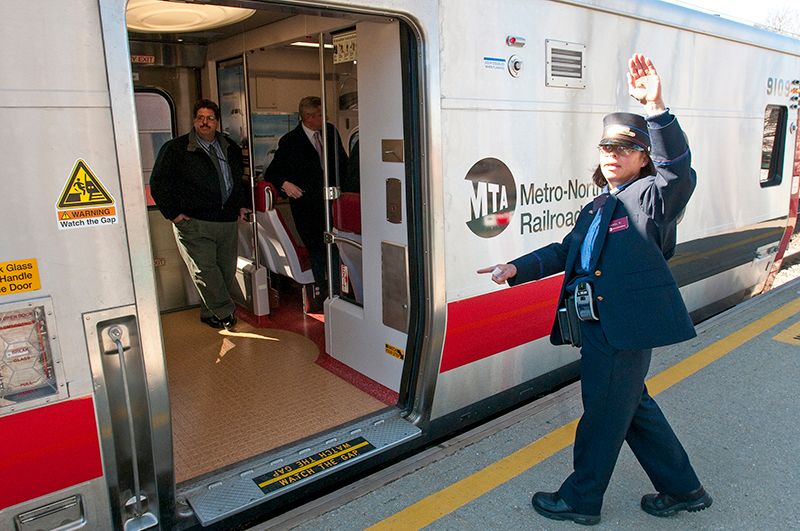
Photo: Metropolitan Transportation Authority / Patrick Cashin
Metro-North also encompasses much more than just trains. Besides the three separate train lines — the Hudson line, the Harlem line, and the New Haven Line — Metro-North also has a bus service and ferries lines. The Hudson Rail Link feeder bus service in the Bronx runs daily and carries commuters from the Riverdale neighborhood of the Bronx to Metro-North stations. Metro-North also operates the Haverstraw-Ossining and Newburgh-Beacon ferries, both of which connect with the Hudson Line. Due to the COVID-19 pandemic, both ferries are temporarily not in operation, but normally the ferries help commuters on the the west side of the Hudson River connect with the Metro-North trains that run on the east side. Despite how large and how widely used Metro-North is, it possesses a number of secrets that the average commuter may not know. Join us as count down 10 hidden secrets about the Metro-North Commuter Rail!
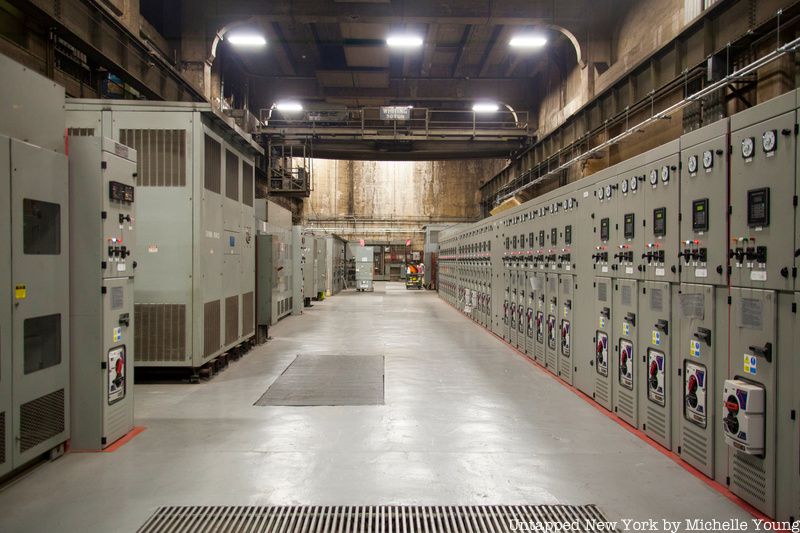
Deep below Grand Central Terminal, the terminus of all the Metro-North train lines, there is a hidden power station known as M42. It was said to be so secret that its very existence was only acknowledged in the late 1980’s and its exact location is still not public. In a story long told by Daniel Brucker, the former docent-in-chief at Grand Central, the original converters, which are no longer in operation, powered much of the New York Central Railroad and were a target for German spies who wanted to sabotage rail movement on the East Coast. Brucker would say that the M42 basement was so secret that you risked being shot on site if you went down there.
While there were spies in America focused on destroying infrastructure, there is no contemporary evidence as of yet that Grand Central, or the M42 basement specifically, was a target. In the book Grand Central: How a Train Station Transformed America, writer Sam Roberts offers that Grand Central could have been a target but as I Ride the Harlem Line documents, neither the reports from MI5 or first-hand accounts by the spy ring’s own members mention it.
Today, almost all of the original rotary converters have been replaced, but one has been kept for historic reasons, seen in the photo at the top of this article. We had a chance to visit the M42 basement in 2016 on a behind-the-scenes tour of Grand Central and you can see more photos of this secret power station here.
Looking very much like a NASA control room and functioning akin to air traffic control, the Metro-North Operations Control Center is located inside Grand Central Terminal as well. The Operations Control Center is staffed 24/7, 365 days a year. It not only manages the commuter trains but also the Amtrak trains and the hundreds of fright trains and maintenance trains that use Metro-North tracks. The men and women who work at the Operations Control Center are known as Rail Traffic Controllers (RTC), and in addition to coordinating train traffic, they handle emergency requests whether due to passenger incidents, track issues, or weather-related problems. The Operations Control Center is so off-limits that many Metro-North employees have never been inside.
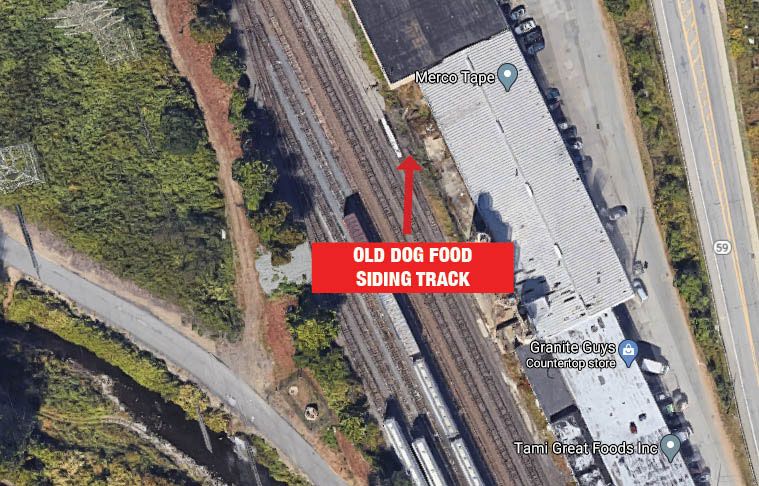
The Dog Food Siding Track in Hillburn, NY
This one is for the nerds. A “siding switch” is a part of a track used when a commercial customer needs to receive a delivery or to ship out products. Along the Port Jervis Metro-North Line, you’ll discover some fun siding names like Dog Food, Corn Oil, and East Red Onion and West Red Onion.
In an explanation, Metro-North says “Perhaps you could call it an occupational affliction, but why do engineers, so practical by virtue of their trade, use names that represent a call back to the past? Perhaps the secret is that in every railroad employee lurks the soul of a real train romantic.” The Dog Food siding is not active, nor is the dog food company whose name is “gone and forgotten” according to Metro-North. Same thing for Corn Oil siding, named after a company that once shipped the product all over the country, and the Red Onion sidings. Other sidings are named for defunct train stations.
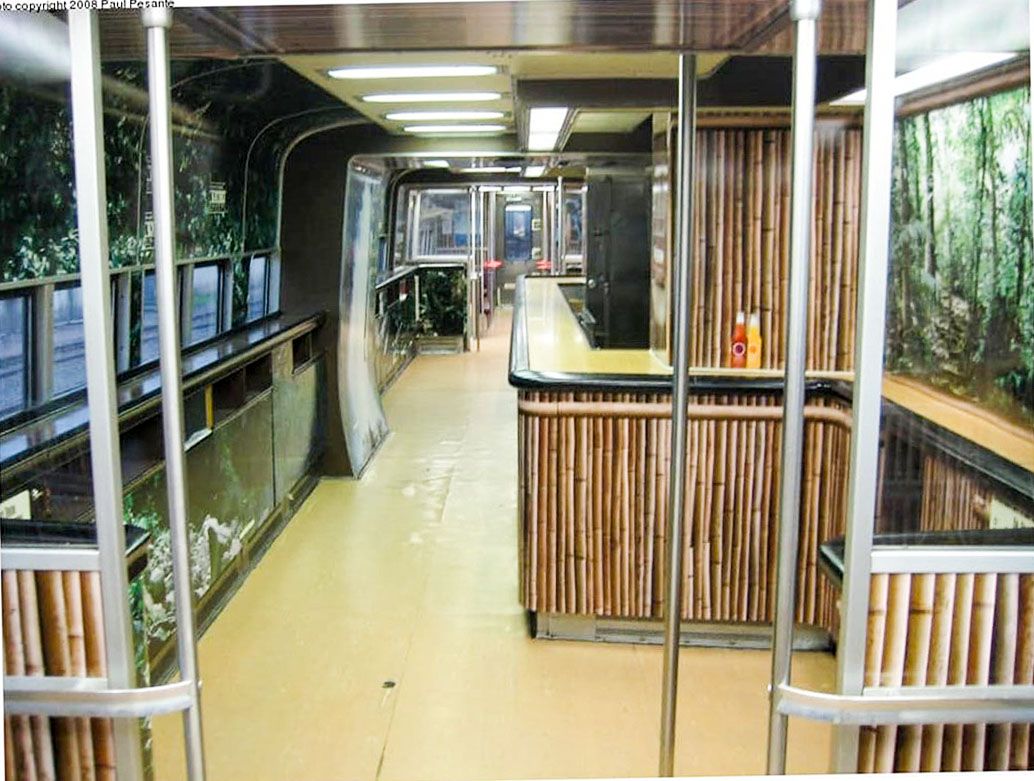 Photo by Paul Pesante.
Photo by Paul Pesante.
Did you know there was once a Jungle Tiki Bar car on Metro-North?? It began as a Tiki Bar Car in 2008, an advertising takeover by the Westin Hotels on the now-defunct bar car on the Metro-North trains. It later evolved into the “Jungle Tiki Bar Car.” If you’ve never experienced the bar car on Metro-North (or Long Island Railroad), we’re sorry you missed this lost way of commuting. The Metro-North bar car had a wraparound bar, narrow enough to still let people through the train. Tiny tables for your drinks were attached to the subway poles that had built-in cup holders for convenience, and a curved banquette in the back of the car allowed for seating.
The tiki bar decor was created with custom-fit decals printed with bamboo poles and backgrounds of sunsets and palm trees. Later, the palm trees were replaced by a lush, jungle background. According to Metro-North conductor Paul Pesante, who shared these photographs with us, the festive bar car drew in a mixed crowd, including unwelcome insect guests, inebriated commuters, and in one case a rather confused man who tried (and failed) to pry a printed drink decal off of the wall.
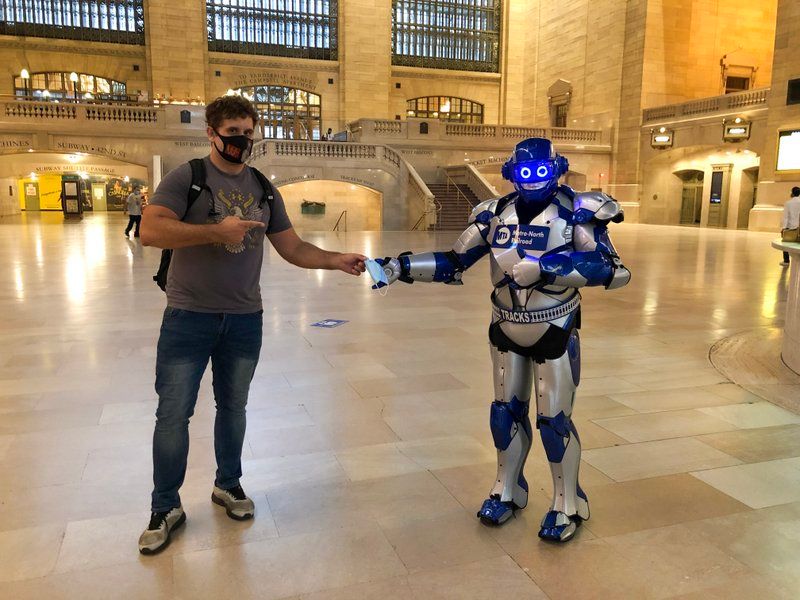
Photo courtesy MTA Metro-North Railroad.
Yes, it’s true. Metro-North has its own superhero with costume and all. Metro-Man has been “on staff” with Metro-North since 1993, educating school kids on railroad safety, offering lessons about the difference between diesel service and third rail power, and more recently, handing out masks in Grand Central and at the Metro-North stations. Metro-Man is part of the TRACKS (Together Railroads and Communities Keeping Safe) Safety Program.
Inspired by Star Wars’ R2-D2, Metro-Man might look like a relic from the 80’s (the metallic glean is pretty retro after all), but it’s the original costume. “There is only one suit/costume, and Metro-North has an employee who mainly wears the suit, but there are also back-up employees who have worn the suit/helped as needed,” MTA spokesperson Meredith Daniels tells us. “Metro-North is sanitizing the suit after each time it is worn.
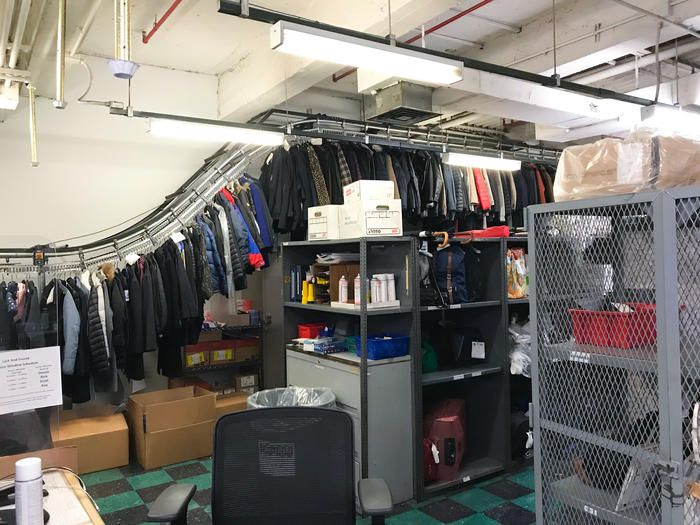
Photo courtesy Metro-North
Commuting is always an adventure, making it easy to forget a thing or two onboard when you are light jogging through the aisle to get off at your stop. Luckily, Metro-North has you covered. Located in Grand Central Terminal, the Metro-North Lost and Found collects over 20,000 items that are left behind on the trains every year. According to Metro-North policy, employees on trains are not allowed to stop a trip if someone realizes they left an item onboard. As a remedy to this policy, the commuter railroad has established a multistep process for recovering items from their lost and found facility.
If an item is lost or forgotten on a Metro-North train, the first step in the recovery process is to complete an electronic Lost Property Customer Inquiry Form. Should Metro-North have your item on file in the lost and found facility, you will be invited to retrieve it at Grand Central Terminal or have it mailed to you instead. During the pandemic, the Lost & Found has been encouraging “contactless recovery” using FedEx, and nearly 200 items this year have been delivered that way so far.
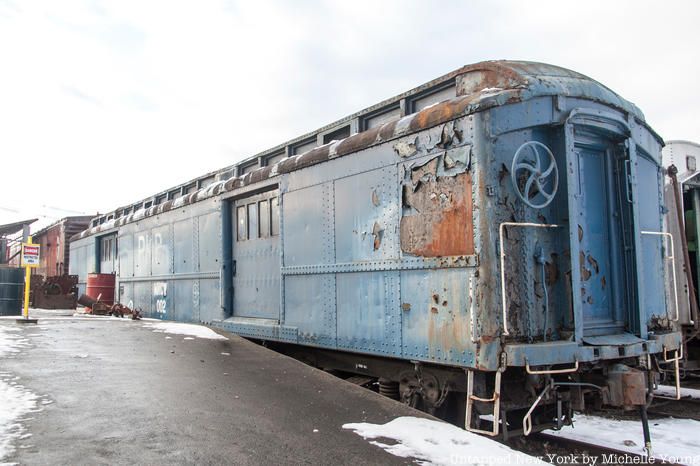
There is one track at Grand Central that sits abandoned in the midst of the busiest train terminal in the world. That is Track 61, or the Waldorf Astoria Track, a siding originally built for freight and as a loading platform for a powerhouse that sat above it. This track is most famous for transporting Franklin Delano Roosevelt, who would go directly into the Waldorf-Astoria Hotel via an elevator to hide the fact that he was wheelchair-bound due to polio. He would have arrived on his personal train car taken from the train station in Hyde Park on the New York Central Line to the tracks beneath Grand Central.
One of the persistent but incorrect myths is that a train car (shown above) that long sat on Track 61 was the personal train car used by FDR and that his limousine fit inside. Untapped New York did a deep-dive, including visiting the train car in its latest home at the Danbury Rail Museum to debunk that myth.
Still, the basement of Grand Central is impressive on its own, covering 49 acres from 42nd to 97th street. It’s New York City’s largest basement and all of City Hall could fit into its depths with a comfortable margin of room to spare. In additoin, the MTA in the midst of an ambitious project to bring Long Island Rail Road trains into the terminal via the East Side Access Project, which is one of the largest transportation projects underway in the United States. When completed, these will be the deepest train tunnels on Earth, sitting 90 feet below the Metro-North tracks in Grand Central, which is itself already over 150 feet below the street. Upon completion, it will take 10 minutes to reach these tunnels by escalator to reach the deepest points of the tunnels.
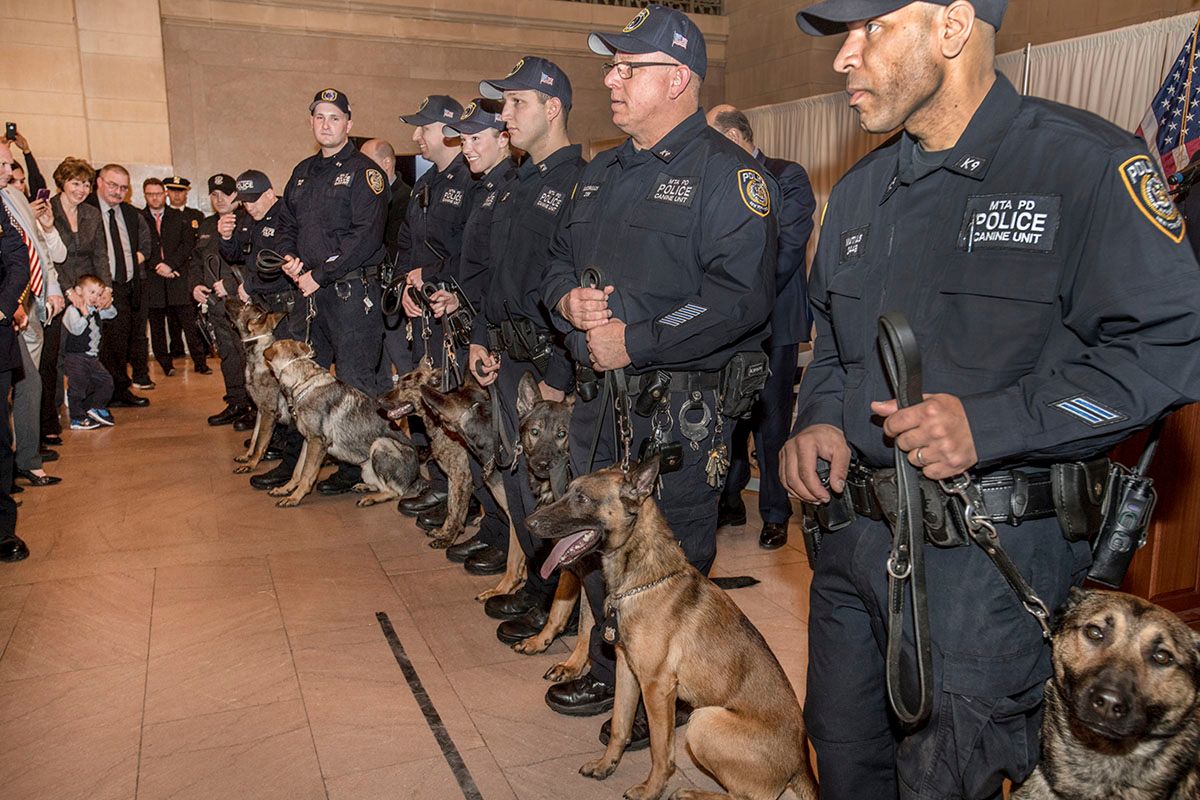
Image courtesy MTA
The MTA PD canine unit is part of the efforts to keep Metro-North (and the Long Island Railroad) safe. It’s one of the largest canine explosives detection forces in the nation — usually consisting of German Shepherds and Belgian Malinois mixes, which are considered to be the most equipped for tactical and strategic purposes. The selected dogs enter canine training when they are roughly a year and a half old, and live with a member of the MTA police department. The dogs go through a 20-week training program in Cooperstown, New York that involves tracking, building searches, and land navigation. The dogs usually have an average career of 8 to 10 years before retiring, and are named after a fallen officer, firefighter or soldier of the United States Armed Services. One of the dogs is sometimes asked to pose as “TRACKS the dog” to accompany Metro-Man, the aforementioned superhero of Metro-North.
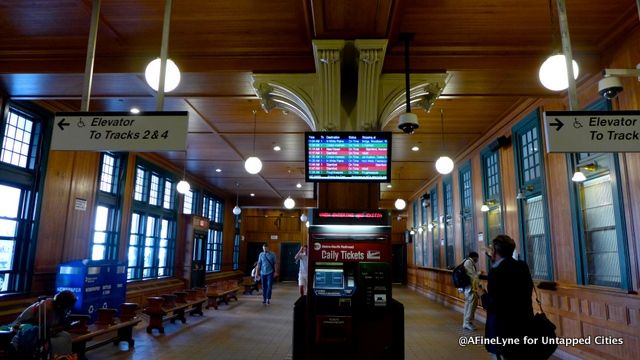
The 125th Street Station in Harlem looks like a relic from a bygone era. The wood paneling and lighting fixtures seem to have straight out of the turn of the century, and in a certain sense, this is true. The original elevated station at 125th Street was built between 1896 and 1897 and was designed by Morgan O’Brien, the principal architect of the New York Central and Hudson River Railroads. However, the original station was plagued with issues, including leaky ceilings and rotting woods. After years of neglect though, the station underwent a six year ‘replication‘ process between 1993 and 1999.
It was called a replication rather than a renovation because none of the original structure is still visible. However, great thought and care were given to the details: selecting paint samples from the era it was originally constructed, using solid oak tongue-and-groove paneling, and using quarry tile for the flooring. All of these efforts together create a Metro-North station that seems suspended in the late 1800’s but owes many thanks to the work of two decades ago.

In 2014, Governor Andrew Cuomo discussed the idea of adding four additional Metro-North Stations in the Bronx, helping connect communities that are underserved by transit to the ever expanding MTA system. The four proposed stations would be built in the Co-Op City, Morris Park, Parkchester, and Hunts Points sections of the Bronx and will be a part of Metro-North New Haven Line. The proposed rail line would cross over the East Riverr via the Hell Gate Bridge. Additionally, the plan also aims to extend the line past its final destination at Grand Central to a new terminus at Penn Station. (This would mean that Grand Central would no longer be a terminus and could correctly be called a station, like it is often mis-categorized as!). The project has gained interest from the likes of Bronx State Senator Ruben Diaz and governor Andrew Cuomo, but it is still far from being a reality. As of 2019, the project – which would cost more than $1 billion and is still only in a planning stage.
Next, discover more secrets by joining us for a virtual talk on the Secrets of Grand Central Terminal later this month!
We are also hosting our in-person Secrets of Grand Central tour this coming weekend.
This article was collectively written by Nicholas Loud, Michelle Young, Lynn Lieberman and Andrew Shoreibah.
Subscribe to our newsletter